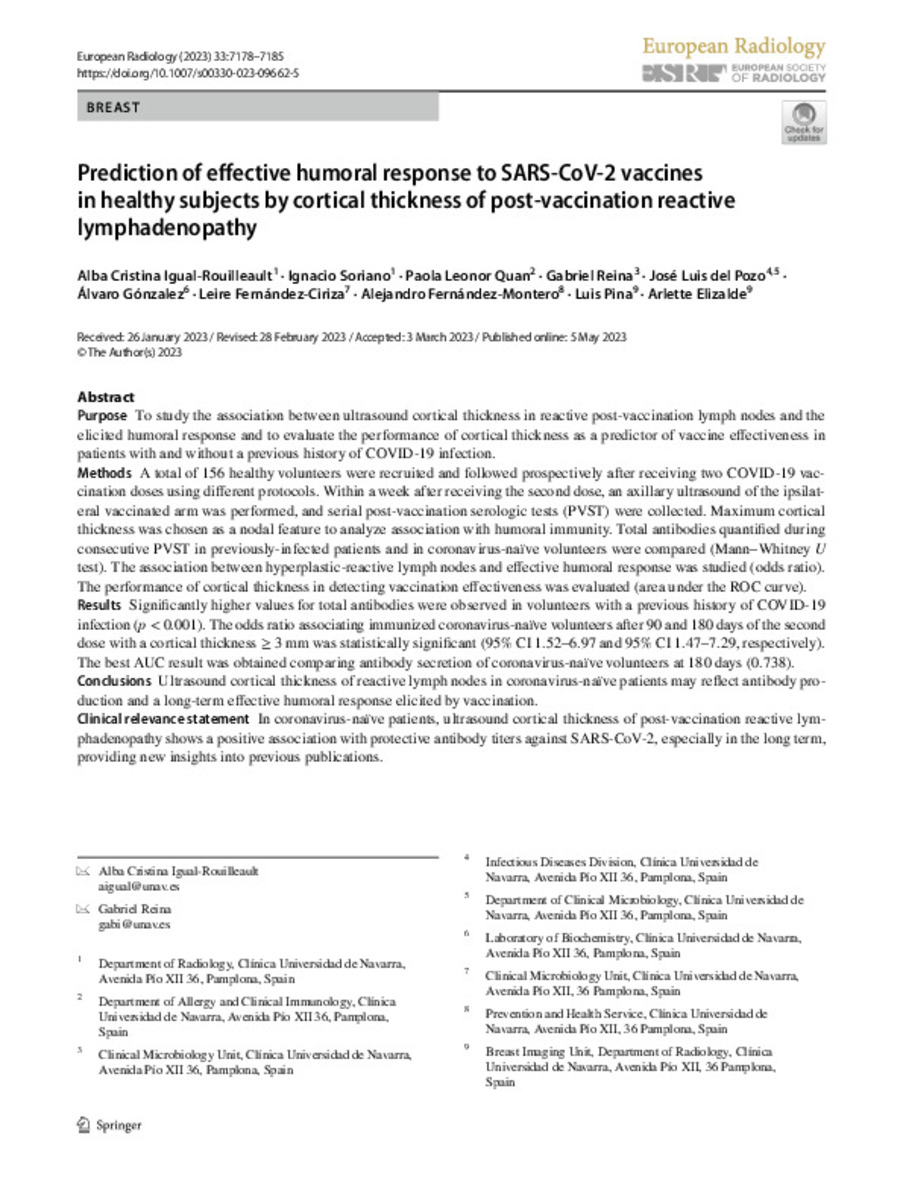Prediction of effective humoral response to SARS‑CoV‑2 vaccines in healthy subjects by cortical thickness of post‑vaccination reactive lymphadenopathy
Keywords:
COVID-19 vaccines
Lymphadenopathy
Healthy volunteers
Note:
This article is licensed under a Creative Commons Attribution 4.0 International License, which permits use, sharing, adaptation, distribution and reproduction in any medium or format, as long
as you give appropriate credit to the original author(s) and the source,
provide a link to the Creative Commons licence, and indicate if changes
were made. The images or other third party material in this article are
included in the article's Creative Commons licence, unless indicated
otherwise in a credit line to the material. If material is not included in
the article's Creative Commons licence and your intended use is not
permitted by statutory regulation or exceeds the permitted use, you will
need to obtain permission directly from the copyright holder. To view a
copy of this licence, visit http://creativecommons.org/licenses/by/4.0/.
Citation:
Gonzalez-Hernandez, A. (Alvaro); Igual-Rouilleault, A.C. (Alba Cristina); Soriano, I. (Ignacio); et al. "Prediction of effective humoral response to SARS‑CoV‑2 vaccines in healthy subjects by cortical thickness of post‑vaccination reactive lymphadenopathy". European Radiology. 33, 2023, 7178 - 7185
Statistics and impact
0 citas en

0 citas en

Items in Dadun are protected by copyright, with all rights reserved, unless otherwise indicated.











